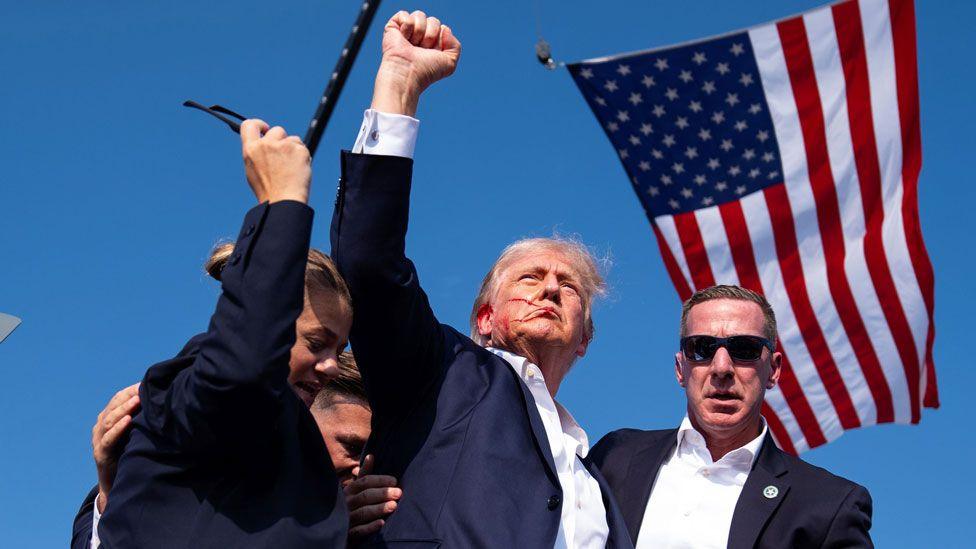
The trump shooting ANATOMY OF A Security failure
By Colleen Long and Calvin Woodward
Photos by Evan Vucci and Gene J. Puskar
Updated SEPTEMBER 25, 2024
The acting director of the Secret Service was incensed at what had happened that July evening. “What I saw made me ashamed,” Ronald Rowe Jr. said. “I cannot defend why that roof was not better secured.”
The unguarded roof, easily within shooting distance of the rally stage, is just one of the myriad questions behind the worst Secret Service security failure in decades. The more that investigators unpack from that day, the more missed opportunities that could have prevented the attack are revealed.
As the United States grapples with an second assassination attempt on Donald Trump’s life, in Florida, there remains a reckoning to be done from the Pennsylvania shooting on July 13 that killed one man and wounded three — the ex-president among them.
The Secret Service is a well-funded, historically elite force with a mission to keep presidents and other higher-ups safe — whether they’re out for a bicycle ride, attending a world summit, visiting a war zone or campaigning.
But at the farm show grounds, a young nursing home aide with a rifle he borrowed from his dad outmaneuvered authorities for more than 90 minutes before firing the shots that came millimeters from killing Trump.
More than two months later, everyone still wants to know:
• When rallygoers reported a man skittering on the squat rooftop of a nearby building, why didn’t anyone in law enforcement move faster?
• Why did the Secret Service exclude that building from its security perimeter, leaving it to local police, and why did the local force not station someone on the roof?
• Why could local law enforcement agencies not communicate in real time with Secret Service agents when they’re supposed to be working together?
• Why did the Secret Service decline offers by local police to use their surveillance drone at the site? And why did Secret Service agents not deploy a system that would have told them an unauthorized drone was aloft — the gunman’s — until it was too late?
One overarching question may never be answered. And in these poisonous times, with the November presidential election closing in and a second attempt on Trump’s life just days in the past, it is urgent: What possessed 20-year-old Thomas Matthew Crooks to try to kill the former president? The public is no closer to that answer than in the immediate aftermath.

This anatomy of an attempted assassination is based on an AP review of dozens of documents, text messages and video, a congressional report and a Secret Service report on the failures, plus interviews on the record and from law enforcement officials who spoke to AP on condition of anonymity to discuss investigations that are still getting going.





Average Rating